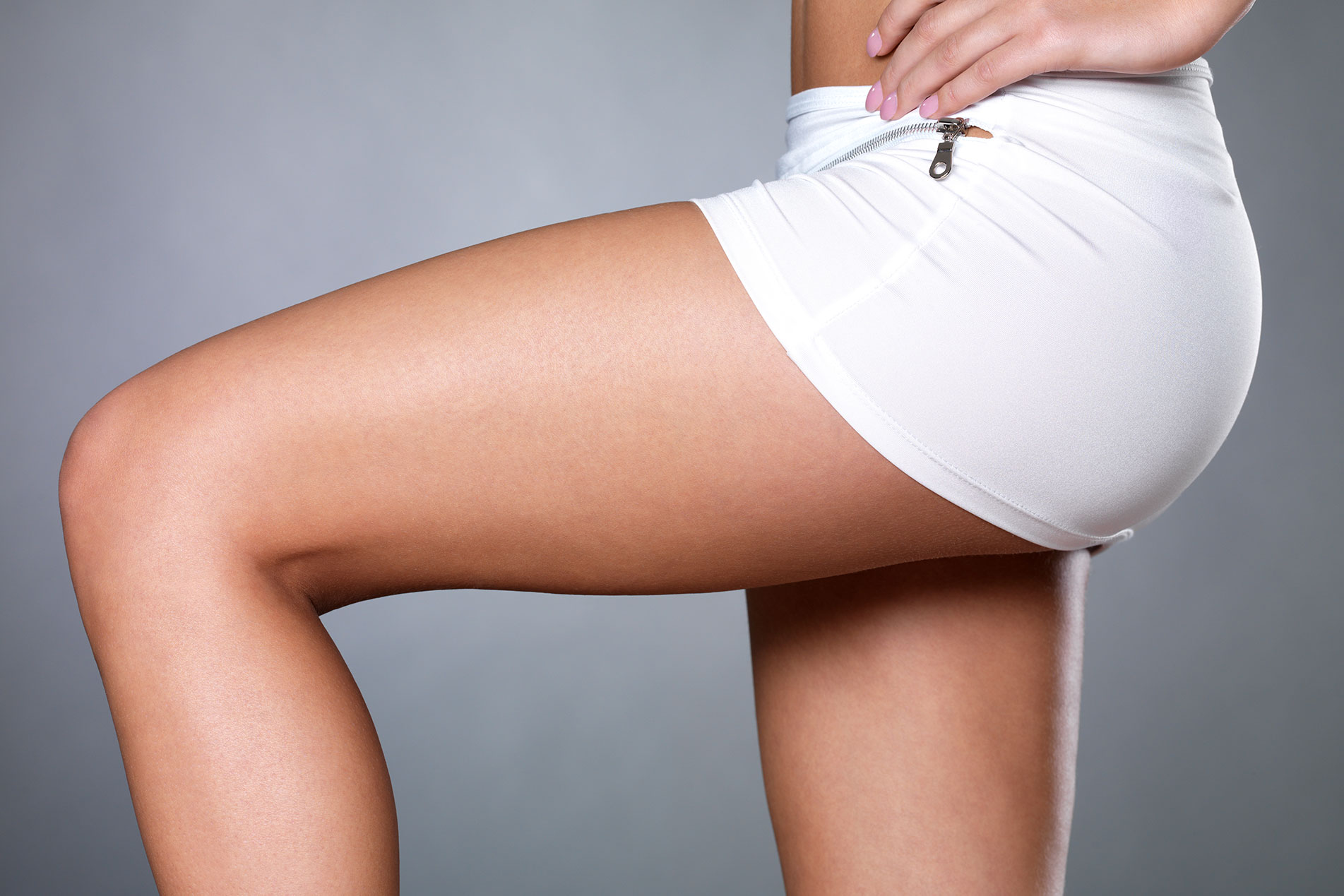Unlike skin in other areas of the body, skin of the female thigh is prone to irregularities resulting from cellulite, waviness, and poor skin tone. Following massive weight loss these features are worsened with poor skin tone, increased cellulite, transverse wrinkles, hanging skin around the thighs and saddle bag. Liposuction alone worsens the condition due to lack of skin elasticity. Thigh lift is usually the best option.
Thigh lift involves removal of excess skin and fat from inner and outer thighs to smoothen the skin and improve the contours and proportions of the thighs and lower body, accentuate the muscle definition and give a youthful shape to the thighs.
In order to conceal the incisions, outer and inner thigh lifts are addressed separately.
- Outer thigh lift: The outer thigh lift is usually performed in conjunction with abdominoplasty as it utilizes an incision in the waistline which is the extension of tummy tuck.
- Inner thigh lift: The inner thigh lift incision varies depending upon the amount of skin excess patient presents with. It is high up on the inner thigh in the groin crease and extends vertically down to the knee along the inseam. If there is minimal skin laxity in the inner thigh, then minimal incision thigh lift can be performed placing the incision in the groin and inner thigh crease.
Good candidates for Thigh lift
- Individuals who have excess sagging skin along the inner thigh and/or the outer thighs.
- Better results are obtained in individuals who are closer to their ideal body weight.
- Patients should have relatively stable weight. Weight fluctuations interfere with the success of immediate and long term results.
- Individuals with good general health and do not have medical conditions that impair healing or increase risk of surgery.
- Nonsmokers: Smokers should quit at least 4 weeks before and 4 after surgery to prevent blood vessel constriction leading to complications with surgery and recovery.
- Individuals with a positive outlook and realistic goals for what thigh lift surgery can accomplish.
- Individuals committed to leading a healthy lifestyle.
Risks:
Possible complications from thigh lift surgery include delayed wound healing, seroma, bleeding, infection and venous blood clots. Each of these complications may be treated effectively with diligent medical care.
Recovery:
- Recovery following thigh lift takes an average of 5-6 weeks.
- Patients can shower 2 days after the surgery, but they shouldn’t submerge their incisions during the recovery period.
- Patients are advised to refrain from exertion and exercise for 6-weeks, although light exercises can begin after 2-3 weeks.
- Compression garment will need to be worn for 4 -6 weeks after surgery sometimes longer.
- One should refrain from sitting on the incisions for 2-3 weeks.
Conclusion:
In general, thigh lift is a very rewarding procedure since it improves the appearance and contour of the thighs. Individual results vary and one has to be realistic in their expectations. Overall, the procedure boost self confidence and improves quality of life.


